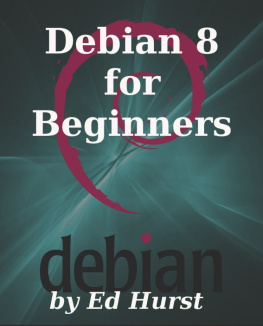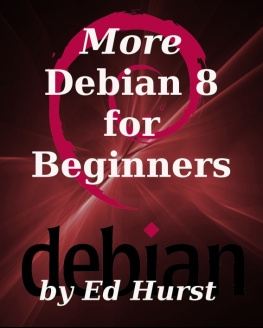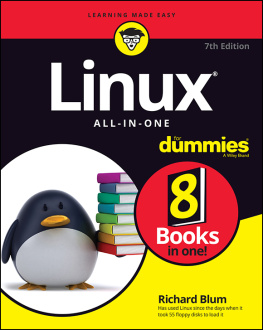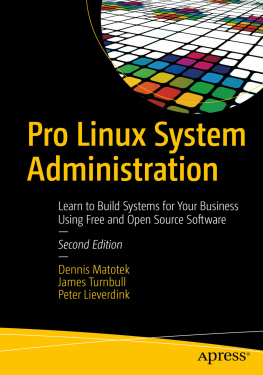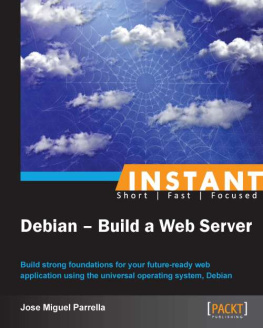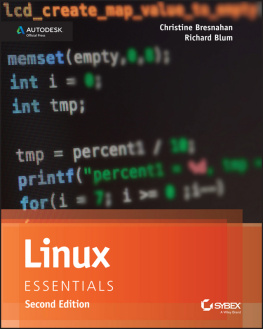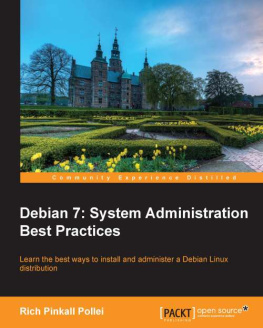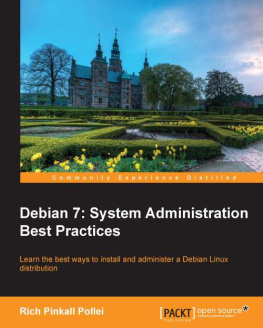Learning Debian GNU/Linux
1st Edition September 1999
1-56592-705-2, Order Number: 7052
360 pages, DM70,- , Includes CD-ROM |
A. Linux Directory Tree
Figure A.1: The Debian GNU/Linux directory tree
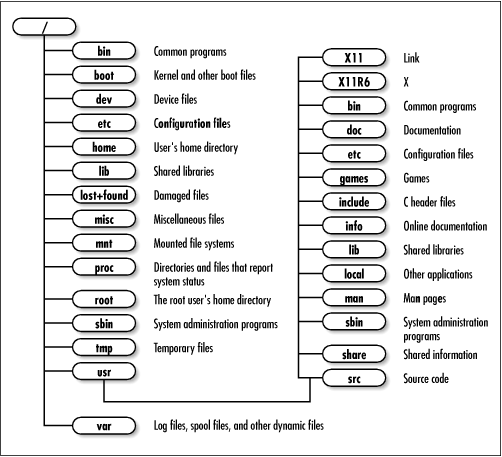
shows the typical structure of the Linux directory tree. Only the principal directories are shown.
Back to:
1999, O'Reilly & Associates, Inc.
 |
B. Principal Linux Files
describes the principal Linux files. You can use it, for example, to help you locate configuration files quickly.
Table B.1: Principal Linux Files
File | Description |
|---|
/boot/vmlinuz* | Linux kernel |
/etc/smb.conf | Configuration of smb (Samba) daemon |
/etc/smbpasswd | Account information for Samba users |
/etc/apache/access.conf | Web server configuration file |
/etc/apache/apache.conf | Web server configuration file |
/etc/apache/srm.conf | Web server configuration file |
/etc/conf.modules | Aliases and options for loadable kernel modules |
/etc/fstab | Filesystems mounted or available for mounting |
/etc/group | Group information |
/etc/hosts | Map of IP numbers to hostnames |
/etc/hosts.allow | Hosts allowed to access Internet services |
/etc/hosts.deny | Hosts forbidden to access Internet services |
/etc/inetd.conf | Configuration for the inetd daemon, which controls access to Internet services |
/etc/inittab | Configuration for the init daemon, which controls executing processes |
/etc/issue | Linux kernel and distribution version |
/etc/lilo.conf | Loader (lilo) configuration file |
/etc/login.defs | Options for useradd and related commands |
/etc/minicom.users | Userids allowed to use minicom |
/etc/mtab | Mounted filesystems |
/etc/passwd | User account information |
/etc/printcap | Printer options and capabilities |
/etc/profile | Default environment for users of BASH shell |
/etc/rc*.d | Scripts for system and process startup and shutdown |
/etc/rc.boot | Scripts for system boot |
/etc/shadow | Secure user account information |
/etc/skel | Skeleton files used to establish new user accounts |
/etc/terminfo | Terminal capabilities and options |
/etc/X11/XF86Config | X configuration file |
/var/log/apache/access.log | Log of web server access |
/var/log/apache/error.log | Log of web server errors |
/var/log/messages | System log |
/var/spool/cron | Directory for at and cron configuration files |
Back to:
1999, O'Reilly & Associates, Inc.
Learning Debian GNU/Linux
1st Edition September 1999
1-56592-705-2, Order Number: 7052
360 pages, DM70,- , Includes CD-ROM |
 |
C. The Debian Package Management Utilities
Contents:
This appendix introduces you to Debian's package managementfacilities, which help you manage software applications. Suppose, forexample, that after installing Linux, you discover you need anapplication that you omitted; you can find the missing application'spackage and use the package management facilities to quickly andeasily install the application. Similarly, when a new version of anapplication becomes available, the package management facilities helpsyou upgrade painlessly, by preserving the application's configurationfiles. The package management facilities also let you query the statusof your system, helping you determine whether important files havebeen deleted.
C.1 Packages
A Debian package (or more simply, a package or a deb) is a filethat contains files necessary to install an application or softwareunit. Debian packages are generally named using a convention that letsyou determine the name of the package, the version of the software,and the release number of the package. shows how the components of apackage name are arranged.
Figure C.1: The structure of a package name

The important virtue of packages is that they containmeta-information; that is, information about their contents. Forexample, each package contains a list of other packages needed forcorrect operation. Similarly, each package contains a list of otherpackages that conflict with its operation. This meta-informationgreatly simplifies system administration, which otherwise can becomequite a challenge. Each package also contains a checksum, that helpsprotect package users against viruses and other sorts of tamperingwith package contents.
Debian packages have several important advantages relativeto those used by other package management schemes. To learn more aboutthese, see the comparison of package formats authored by Joey Hess, athttp://kitenet.net/~joey/pkg-comp/.
Back to:
1999, O'Reilly & Associates, Inc.
Appendix C
The Debian Package Management Utilities |
C.2 The Package Management Tools
Debian GNU/Linux provides three main package management tools:
dpkg
The original package management tool,which is used from the command line. The newer package managementtools, which most users find more convenient, invokedpkg on behalf of the user. However,dpkg provides access to somefunctions - particularly query functions - not available usingthe more user-friendly tools.

